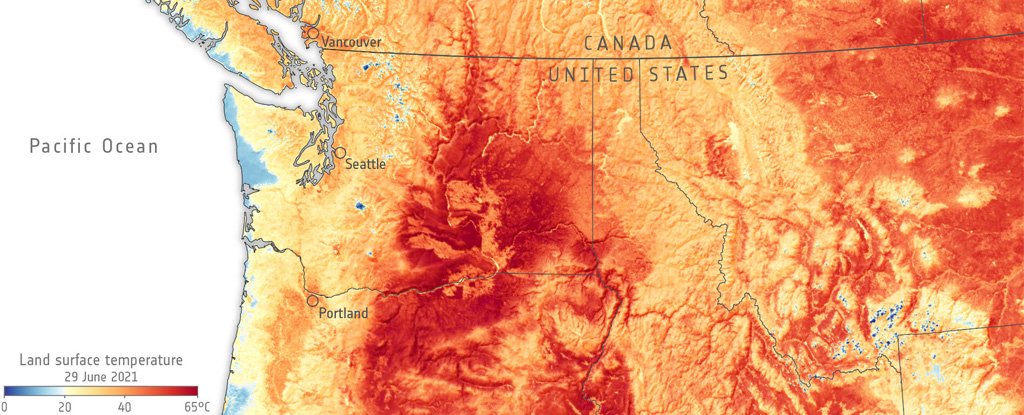Products You May Like
A record-breaking heat wave that hit the western United States and Canada at the end of June would have been “virtually impossible” without human-caused climate change, according to an analysis by a group of leading climate scientists.
The World Weather Attribution group said that global warming, caused by greenhouse gas emissions, made the heat wave at least 150 times more likely to happen.
Pacific Northwest areas of the two countries saw temperatures that broke records by several degrees, including a Canadian record of 49.6 degrees Celsius in the village of Lytton, which was subsequently mostly destroyed in a wildfire.
“There’s absolutely no doubt that climate change played a key role here,” Friederike Otto, a climatologist at the University of Oxford said during a press conference discussing the findings.
To investigate whether climate change played a role, the scientists analyzed historical observations and computer simulations to compare the climate as it is today, after about 1.2 degrees Celsius (2.2 degrees Fahrenheit) of global warming since the late 1800s, with the climate of the past.
They found the observations were so extreme they lie far outside the range of historically observed temperatures. But with the climate of today, it was estimated the event could take place once in a thousand years.
Looking into the future, if the planet were to warm by 2 degrees Celsius (3.6 degrees Fahrenheit) – which could happen as early as the 2040s at the current rate – heat waves like these would occur every five to ten years and be around 1 degree Celsius (1.8 degrees Fahrenheit) hotter.
Two theories
The heat wave meant that last month was the hottest June on record in North America, according to data released by the European Union’s climate monitoring service on Wednesday.
The death toll isn’t yet known but is thought to run into the hundreds.
The researchers suggested two broad explanations for how climate change made the stunning heat more likely.
The first was that, while climate change made the event more likely to occur, it remains an extreme outlier.
In this explanation, pre-existing drought that deprived the area of evaporative cooling, together with a slow-moving high pressure system in the atmosphere called a “heat dome,” were supercharged by climate change.
According to this theory, without the influence of climate change, the peak temperature would have been about 2 degrees Celsius (3.6 degrees Fahrenheit) lower.
The second hypothesis is more dire: that the climate system has crossed a threshold where a small amount of overall global warming is now causing a faster rise in extreme temperatures than has been observed so far.
“Everybody is really worried about the implications of these events because this is something that nobody saw coming that nobody thought possible,” said co-author Geert Jan van Oldenborgh of the Royal Netherlands Meteorological Institute.
“We feel that we do not understand heat waves as well as we thought we did,” he said, adding it might mean that such temperatures are also possible at other high latitude locations such as northern Europe, the rest of the US, China and Japan.
This meant that adaptation plans need to be designed for temperatures well above the range witnessed in the past, the team warned.
